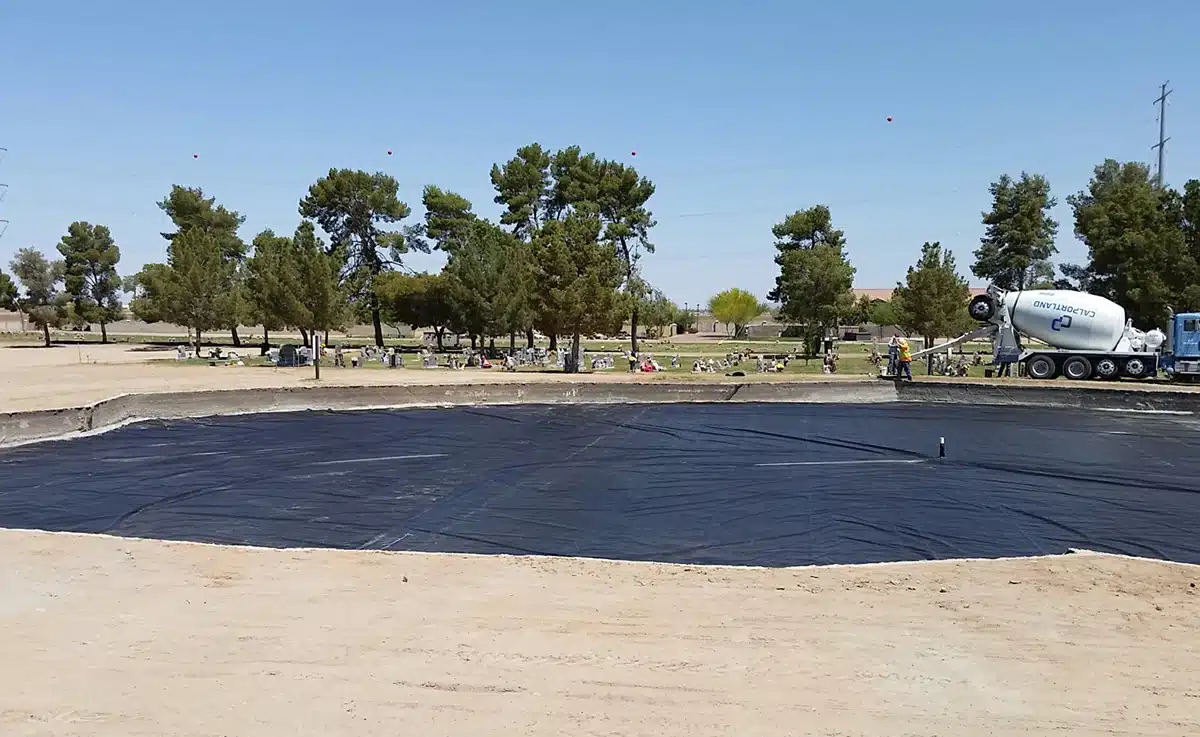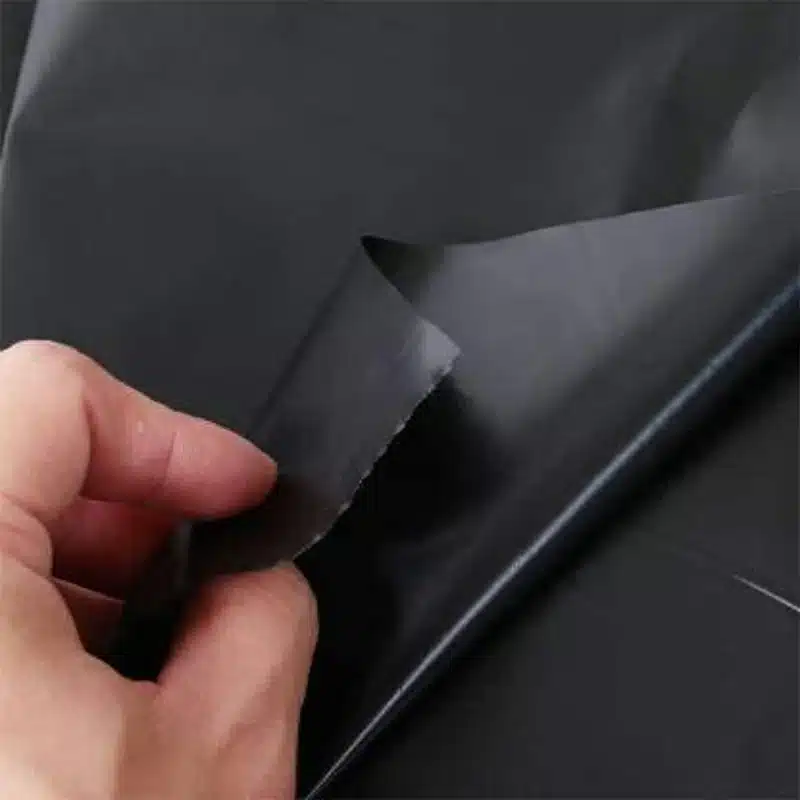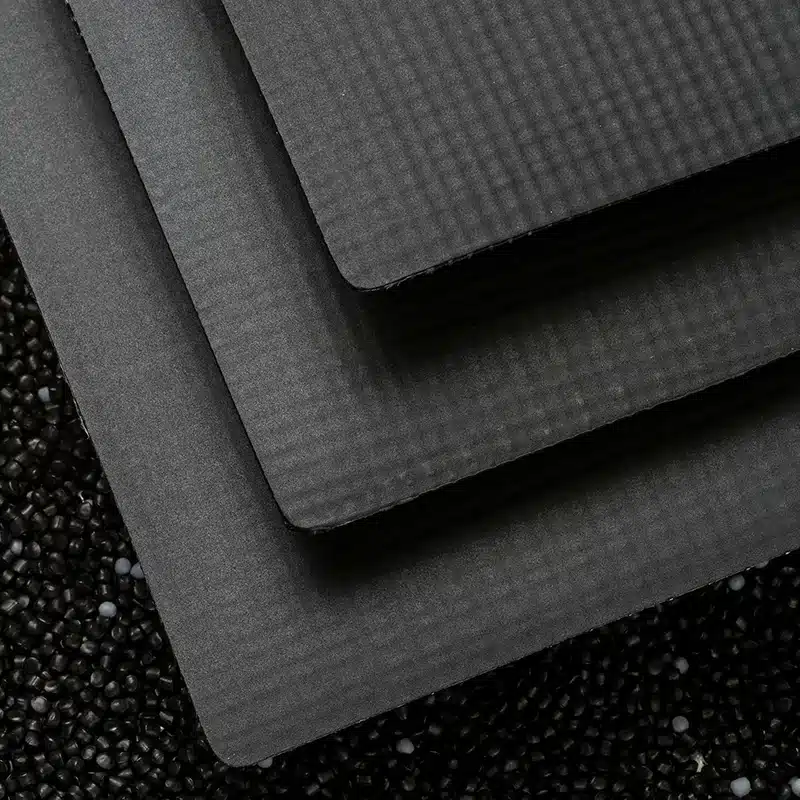+86-159 9860 6917
info@geofantex.com
geofantex@gmail.com
+86-400-8266163-44899
In the vast world of construction and environmental protection, the application of high-density polyethylene (HDPE) as geomembranes is revolutionizing the way projects are safeguarded against environmental hazards. Known for their robustness and effectiveness, these geomembranes are crucial for a variety of applications, from hazardous waste containment to pond linings and more. This article delves into the essence of high-density polyethylene geomembranes, distinguishing them from other materials like geotextiles, and highlighting their diverse uses.
What is Geomembrane High-Density Polyethylene?
Geomembrane high-density polyethylene (HDPE) is a type of durable synthetic membrane formed from the polymerization of ethylene. It’s designed to protect structures from the ingress of moisture, water, liquids, radon, carbon dioxide, and methane, together with chemicals. Characterized by its high resistance to punctures, chemical degradation, and ultraviolet light, HDPE geomembranes are ideal for applications requiring robust environmental containment and protection. Commonly used in landfill liners, mining, and water reservoirs, they provide an effective barrier that prevents a wide range of pollutants from seeping into the environment.

What is the Difference Between Geotextile and Geomembrane?
While both geotextiles and geomembranes are used in civil engineering projects, they serve different functions and are made from different materials. Specifically, a geomembrane is a plastic film, often made of high-density polyethylene, and serves as an impermeable membrane used primarily for containment purposes to prevent the migration of contaminants. On the other hand, a geotextile is a fiber cloth that acts as a permeable fabric that, depending on its design, can separate, filter, reinforce, protect, or drain when used in association with soil. The impermeability of geomembranes is crucial in applications such as landfill liners and caps, where barrier functionality is required to ensure environmental safety.
What is High Density Polyethylene Used For?
High-density polyethylene (HDPE) is a versatile plastic with numerous applications beyond geomembranes. Its strength, durability, and resistance to chemicals make it suitable for products such as piping systems, gas containers, water bottles, and corrosion-resistant piping. In environmental engineering, HDPE’s chemical stability and resistance to abrasion make it ideal for underground pipes that need to withstand harsh conditions without corroding or leaking.
What is the Difference Between Geomembrane and HDPE?
The terms “geomembrane” and “HDPE” often cause confusion but refer to different concepts. A geomembrane is a broad category that includes any synthetic membrane used to stabilize, protect, or isolate an area, often used for environmental protection. HDPE refers specifically to a type of plastic used to make these membranes and is characterized as tough and non-flexible. While HDPE is a common material for geomembranes due to its properties, not all geomembranes are made from HDPE; they can also be made from materials like PVC, which are flexible and relatively easy to handle, LLDPE, or fPP, depending on the needs of the project.
High-density polyethylene geomembranes are critical in modern environmental and civil engineering due to their robustness, versatility, and efficiency in preventing environmental contamination. Whether it’s lining a landfill or creating barriers in hydraulic applications, the role of HDPE in geomembranes is indispensable. By understanding the unique properties and applications of HDPE and how it differs from other materials like geotextiles, professionals can better choose the right materials for their specific needs, ensuring durability and environmental safety.



Get Free Sample
We’ll respond as soon as possible(within 12 hours)






















